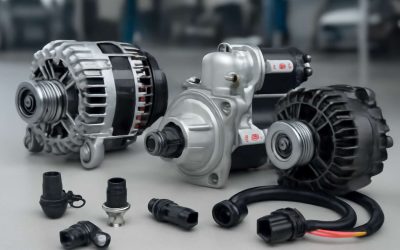
The automotive industry provides a variety of career opportunities for auto electricians. Many of these professionals specialize in specific areas, such as car batteries or diagnostic equipment. If you’re considering a career in the automotive industry, learning more about these specialties can help you determine whether they’re right for you.
The Electrical System in Your Vehicle: What It Does and How to Use It
When you think of a car, it’s likely that your mind immediately goes to things like headlights, windshield wipers, air conditioning, music players and other electronics. But a car’s electrical system is actually much more complex than that, and it does many more important tasks that you probably never even realize.
It’s vital to understand the electrical system of your car so you can identify and fix any problems that may arise with it. Fortunately, you can learn all about the system by taking an online course that shows you how to troubleshoot electrical issues with simple schematic diagrams and step-by-step instructions.
Why You Need a Wiring Diagram for Your Car’s Electrical System
The electrical system of your car is responsible for supplying power to all of the electronic and mechanical devices inside your vehicle. It includes the electrical motor, gauges, sensors, heater, headlights, and other components that run on a battery.
How It Works
The most basic form of the automotive electrical system is a series circuit. In this type of circuit, each load device (such as the cooling fans) operates on one-half of the system voltage. The remaining half is sent to the fuse to protect them from overloads.
You can easily troubleshoot a series circuit with a voltage meter. Measuring the voltage drop is a great way to see if there’s an issue with the wires or connectors that connect the load device to the circuit. It’s also more accurate than measuring voltage with a test light or checking the fuse because it tells you if there’s resistance that could be restricting the current in the circuit.
How to Read a Wiring Diagram for Your Car’s Engine
If you want to know how your engine works, you can always refer to the wiring diagram in the manual. The diagram will explain what each component does, so you can understand how everything fits together and work with each other.
How to Read a Wiring diagram for your car’s ignition
If your car’s ignition switch is in the “off” position, you can follow this circuit: Path (1) – The light relay receives the voltage, but because the armature is in the open/off position, it offers no path for power to flow onwards. Path (2) – The control module receives the voltage, and that path ends when the ignition switch is in the “on” position.
The wiring diagram for your car’s ignition can be found in the service manual or by visiting the manufacturer’s technical website. You can also purchase a digital version that is more convenient to reference and easier to interpret. This makes it easier to find the correct part when you’re working on your car’s electrical system, and it can save you time and money.



0 Comments